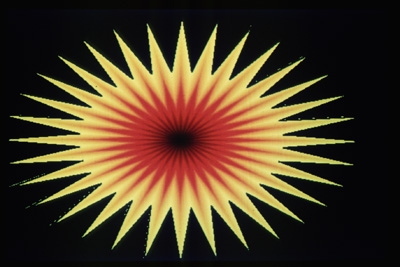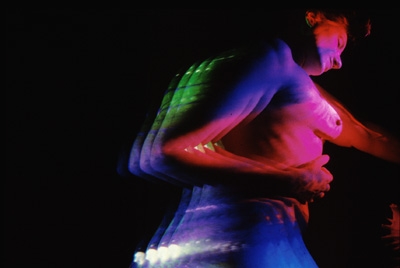

2003, Italia, 16mm & DVD, colour, music from Le Quattro Stagioni (Estate-Presto) by Antonio Vivaldi, 2 min. 30 sec.
Composing the rhythmic score of the images of Sole nero I felt a "beauty of power", as the poet Pierre-Jean Jouve has written, more than a "beauty of harmony", designing "light sculptures" which develop over time and at night incise on the retina, following an optic-illuministic score governed by the rules of an interior metre.
More than a revisitation of the pre-cinema, from Muybridge to Plateau, which seeks to reproduce the generative moment of the image, between stasis and dynamism, like Fischinger, Sole nero consists also of the point of convergence of my multimedia work: with images of the real, paint on film, digital graphic creations (by my daughter Francesca), animation and hyperkinetic editing. All this is illuminated by the concept of a "poetic cinema", under the aegis of Gerard de Nerval, from whose work the title Sole nero is taken (thus closing a circle opened more than 20 years ago with my work Aurélia, also inspired by one of Nerval's prose poems).
The atomic explosion of Sole nero, metaphor of a cosmic force of destruction/creation, reverberates its incandescent colours in the camera obscura of the mind... nuclei of frames as musical suites governed by the law of counterpoint and leitmotiv. The black pauses which, as in Bresson, mark the rhythm of the visions, the intermittence of the tale. Two and a half minutes of "atomic cinema": a compressed film time, a "Proustian" time, contracted and dilated like a satori. And, in contrast to this "world of origins", struck by light and darkness, animated by stroboscopic palpitations and interior illuminations, the 18th century music of Vivaldi, who celebrates the Dionysian euphoria of the summer.
Notes and aphorisms taken from Diari di lavoro
by A. Mazzoleni, 2003
